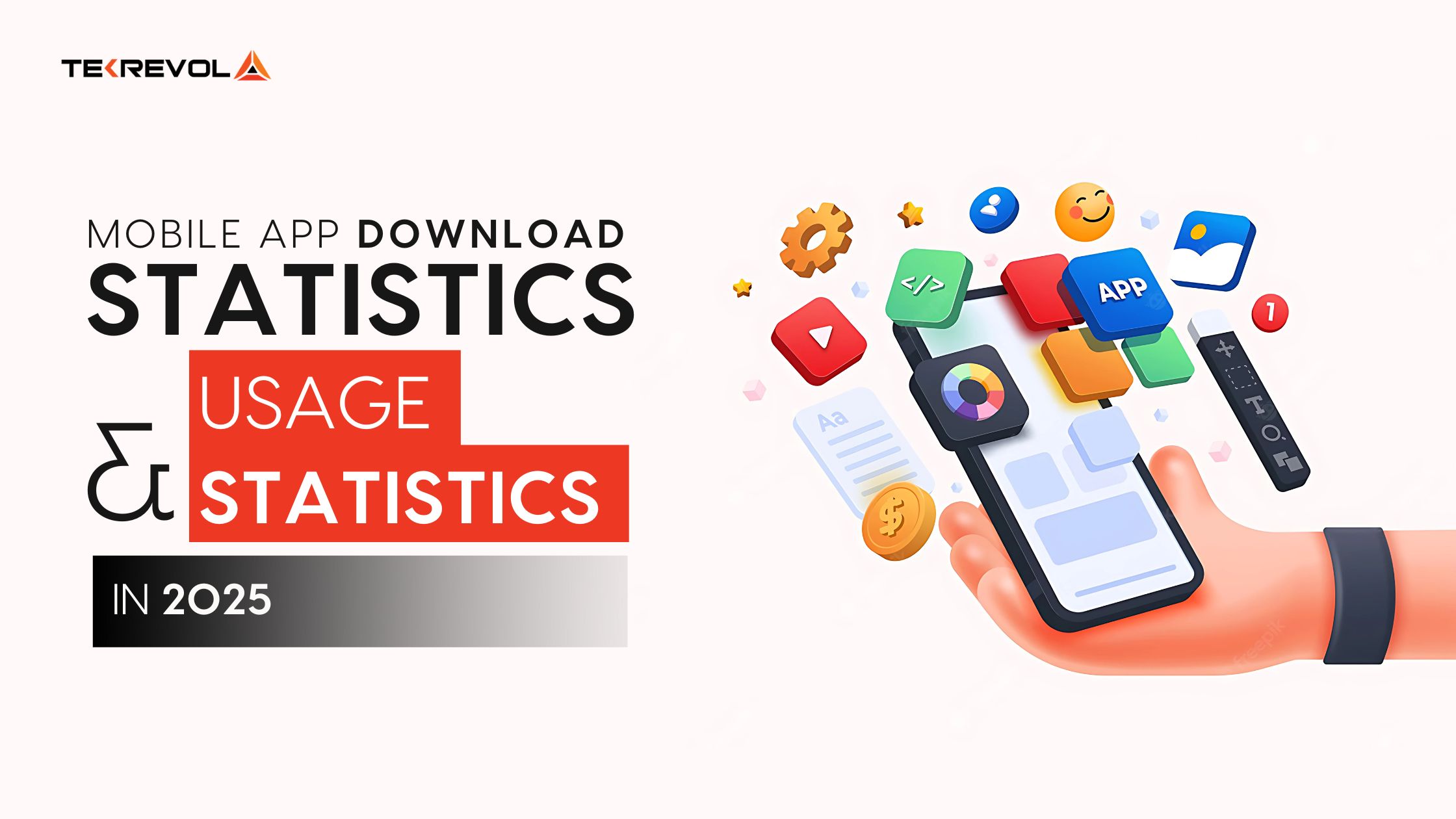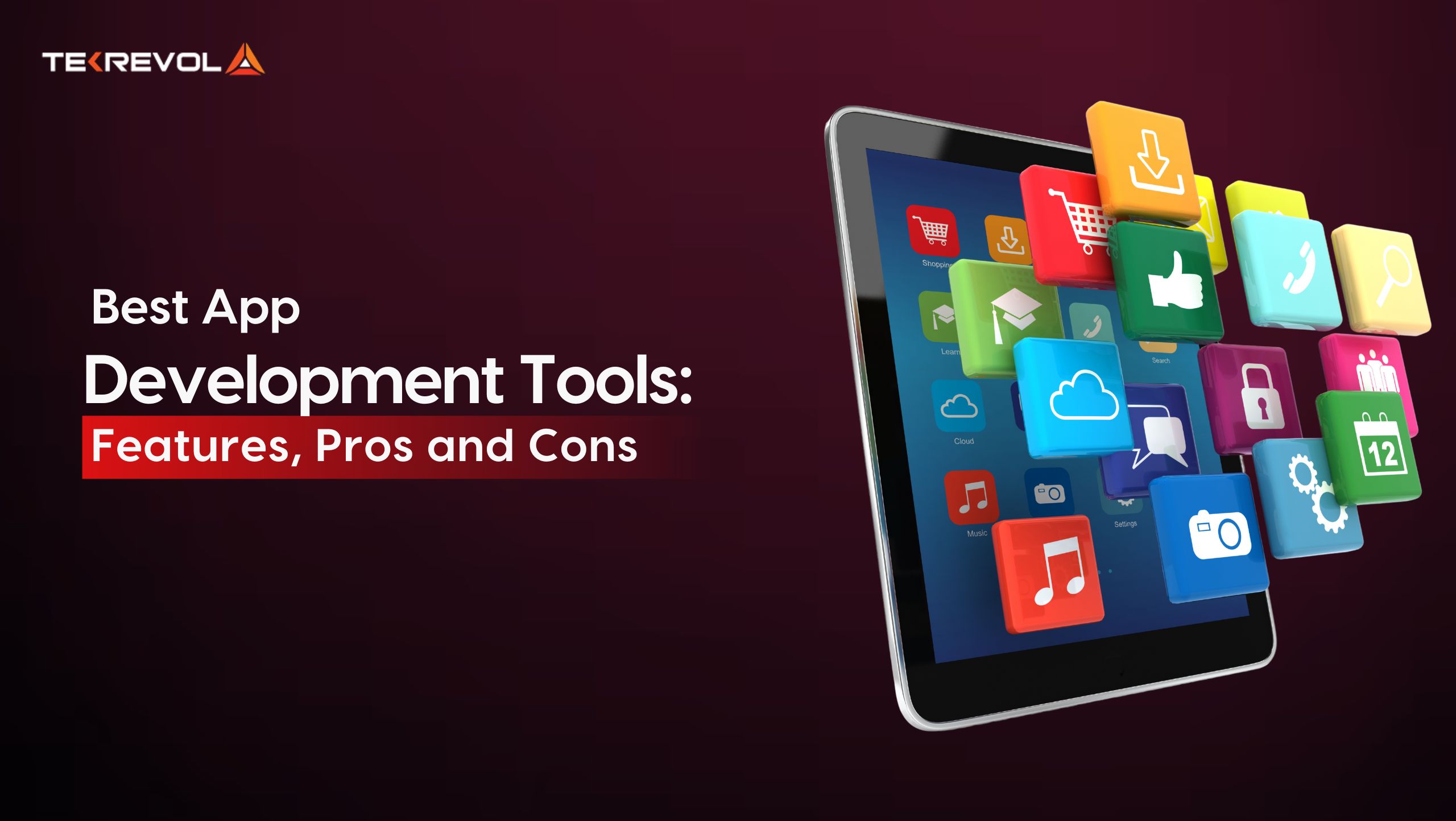What are the two main functions of a mobile app? User engagement and problem-solving. Frontend frameworks are majorly responsible for achieving both these goals. These frameworks help developers create eye-catching and user-friendly interfaces while speeding up app development, without reinventing the wheel.
Essentially, front-end development frameworks are a set of tools, libraries, and ready-made components that speed up app creation and keep everything looking consistent.
Popular front end frameworks like React, Angular, and Vue.js have remained the preference of millions of app developers worldwide when it comes to creating unique features instead of writing basic elements from scratch.
But here’s the catch: With so many front-end frameworks out there, picking the best one for your project can feel overwhelming. You need to think about things like how well it performs, how easy it is to learn, and whether it has a strong community backing it up.
Stuck deciding the best frontend framework for your application? This guide will help you walk through the most popular front-end development frameworks from which you can choose to create fantastic apps that users would fall in love with.
What are Frontend Frameworks?
Let’s get down to basics and break up some key terms:
Framework: This is essentially the pre-constructed building for developers to help create their apps more quickly. The front-end is kind of like the blueprint to construct a house. You do not need to draw everything.
Front-end: This part is what the users can view and use on the application or website. This will be the “face” of your digital product.
Frontend Framework: It’s a set of tools for helping front-end developers create the frontend part of an app quicker and easier. Packed with ready-to-use components and tools.
Frontend frameworks have really changed with time. At first, the development relied on simple JavaScript libraries for common tasks. Nowadays, these frameworks are all-grown tools, allowing for component-based architecture.
This helps the developer create applications based on reusable code segments, thereby becoming more efficient and easy to maintain.
As of 2024, the frontend landscape is dominated by React, Angular, and Vue.js. For instance, React leads with around 40% market share among developers, followed by Angular and Vue.js with approximately 20% and 15% respectively.
Why do developers and businesses love frontend frameworks? Here are some of the key benefits:
Faster Development
Front-end frameworks have already created components and structures in advance, enabling developers to produce applications more quickly without reinventing the wheel. This hastens the process of development and brings applications to the market much sooner.
Consistent Design
Frameworks ensure standardized UI components and guidelines on styling that guarantee a consistent UI look throughout the application. This will make the user experience better, and the application easier to maintain by developers.
Better Performance
Many frontend frameworks are optimized for speed and efficiency, using techniques such as virtual DOM and efficient rendering. This results in faster load times and smoother interactions for end-users.
Cross-platform Compatibility
Frameworks usually support various platforms and devices, so developers can create cross-platform applications that are compatible with both desktops and tablets or smartphones. It decreases the necessity of having separate codebases for different platforms.
Responsive Design
Most frontend frameworks support built-in responsive design; hence, creating an application that automatically adjusts the screens and orientations is less taxing. This means that different screens will not affect the usage by the user.
Community Support
Popular frontend frameworks come with large active communities that supply resources, plugins, and solutions to common problems. This support network of numerous developers helps solve various problems and keeps one up-to-date with best practices.
- Build Your Dream App with Expert Help
- Our mobile app development company specializes in popular front end development frameworks to create user-friendly, high-performance apps.
Top 10 Frontend Frameworks for App Development in 2025
-
React
React, developed by Facebook in 2013, is a popular JavaScript library for building user interfaces. Its unique features include the virtual DOM, which enhances performance by minimizing direct updates to the actual DOM, and a component-based architecture that allows developers to create reusable UI elements. This makes React a go-to choice for many developers looking to streamline their workflow.
Pros and Cons
Pros:
- Performance Optimization: The virtual DOM ensures faster rendering and updates.
- Component Reusability: Developers can create components once and use them multiple times.
- Strong Community Support: A large community provides resources, tools, and libraries.
- SEO Friendly: React can be rendered on the server side, improving SEO.
- Rich Ecosystem: Numerous libraries and tools enhance React’s capabilities.
Cons:
- Steep Learning Curve: New developers may find React challenging initially.
- Frequent Updates: Constant changes can lead to compatibility issues.
- JSX Syntax: Some developers may struggle with JSX, which combines HTML and JavaScript.
- Boilerplate Code: Setting up a React project can involve more initial code than other frameworks.
Why is React Still Dominating in 2025?
React remains the frontrunner in the front-end framework space, with a significant 40% market share among developers. Its continued success is based on a mature ecosystem of plugins and libraries, along with strong support from the community that continually updates and makes it current. This makes sure developers have all the tools required to build modern applications.
When to Choose React for Your App Development Project
React is an excellent choice for:
- Single-page applications that need smooth transitions and fast updates.
- Progressive web apps that require offline capabilities and quick loading.
- Complex user interfaces with many interactive elements.
- Real-time applications like chat apps or collaborative tools.
Popular Apps Built with React:
- Netflix
- Airbnb
- Dropbox
- WhatsApp (web version)
Read More: Flutter Vs React Native – Which One is Better for Mobile App Development in 2025?
2. Angular
Angular, the most popular TypeScript-based web framework created by Google in 2010, is a great deal powerful. Often, JavaScript frameworks are called “superhero.” Angular is an incredible application with outstanding performance.
Since 2025, over 1.2 million live websites have utilized this popular framework. It uses two-way data binding between views and models and dependency injection that provides efficient management of dependencies.
Pros and Cons
Pros:
- Two-way data binding simplifies UI updates and improves performance
- Dependency injection enhances code reusability and testing
- Comprehensive CLI tools speed up development and project setup
- Strong typing with TypeScript catches errors early in development
- Modular architecture promotes organized and maintainable code
Cons:
- A steep learning curve, especially for beginners
- Complex setup process for new projects
- Regular updates may require frequent code adjustments
- Larger bundle size compared to some other frameworks
- Performance issues with complex applications if not optimized properly
What’s New in Angular’s Evolution?
The latest version of Angular introduces Ivy Renderer. Now compilation speed has been enhanced, and the bundles have been reduced in size, thus improving the performance features, such as faster change detection and memory management improvement.
The framework now offers better support for server-side rendering and progressive web apps, making it more versatile for various project types.
Ideal Use Cases for Angular in 2025
Angular is best suited for:
- Large-scale enterprise applications requiring robust architecture
- Real-time applications like chat systems or live updates
- Complex single-page applications with dynamic content
- Progressive web apps needing offline capabilities
Popular Apps Built with Angular:
- Gmail
- Forbes
- Upwork’’
- PayPal
- Microsoft Office Home
- Deutsche Bank
Read More: Angular vs React: Which Frontend Framework Reigns Supreme in 2025?
- Revolutionize your app with top frameworks!
- Partner with TekRevol and avail our expertise in popular front end frameworks and ensure enhanced user satisfaction and engagement for your mobile app.
Vue.js
Vue.js, created by Evan You in 2014, is a progressive JavaScript framework for building user interfaces. Known for its simplicity and flexibility, Vue.js has gained significant traction in the developer community.
As of 2025, over 1.9 million live websites use Vue.js, including major brands like Louis Vuitton, Adobe, and BMW. Its lightweight nature and focus on the view layer make it an excellent choice for single-page applications (SPAs) and easy integration into existing projects.
Pros and Cons
Pros:
- Component-based architecture enables the creation of reusable and modular UI elements
- Reactive data binding automatically updates the UI when data changes
- Lightweight size (18-21kb) improves load times and search engine optimization
- Easy integration with third-party libraries and existing projects
- Detailed, regularly updated documentation makes learning and troubleshooting easier
Cons:
- Smaller ecosystem compared to React or Angular, with fewer tools and resources
- Lack of official backing from a major tech company
- Potential backward compatibility issues with updates
- Limited variety of built-in features compared to more comprehensive frameworks
- Some documentation in Chinese can create a language barrier for non-Chinese speakers
- Based on the Model-View-ViewModel (MVVM) architecture pattern, it is designed to be lightweight and easy to learn.
What’s New in Vue’s Evolution?
Vue 3, the latest major version, introduced the Composition API, offering a more flexible way to organize component logic. The upcoming Vapor mode promises to eliminate the Virtual DOM, potentially boosting performance significantly.
Vue’s ecosystem continues to grow, with Nuxt 4 (for server-side rendering) and Pinia (for state management) becoming increasingly popular.
Ideal Use Cases for Vue.js in 2025
Vue.js is best suited for:
- Single-page applications requiring smooth transitions and fast updates
- Projects needing a lightweight, flexible framework
- Applications with a component-based architecture
- Startups and small to medium-sized businesses looking for quick development
Popular Apps Built with Vue.js:
- Alibaba
- GitLab
- Grammarly
- Nintendo
- Behance
- Xiaomi
Svelte
Svelte, introduced by Rich Harris in 2016, is a revolutionary approach to building web applications. Unlike traditional frameworks, Svelte compiles your code at build time, resulting in highly efficient JavaScript that updates the DOM directly.
This unique approach has gained significant traction, with 73% of developers expressing their love for Svelte’s capabilities in frontend development.
Pros and Cons
Pros:
- Compiler-based approach eliminates the need for a virtual DOM, improving performance
- Simpler, more intuitive syntax reduces boilerplate code and speeds up development
- Built-in state management without requiring external libraries
- Smaller bundle sizes lead to faster load times and improved user experience
- Integrated animations and transitions without additional dependencies
Cons:
- Smaller ecosystem compared to more established frameworks like React or Vue.
- Limited plugin and integration support for complex production applications
- Learning curve for developers accustomed to virtual DOM-based frameworks
- Lack of support for reference updates and array mutations
- Special syntax for event handling may be initially frustrating for some developers
What’s New in Svelte’s Evolution?
Svelte 5, released in late 2024, marks a significant milestone. It introduces “runes,” an explicit mechanism for declaring a reactive state, improving performance and predictability.
The new version also enhances the compiler, resulting in even smaller bundle sizes and faster runtime performance.
SvelteKit, Svelte’s full-stack framework, continues to gain momentum, offering powerful server-side rendering and static site generation capabilities.
Ideal Use Cases for Svelte in 2025
Svelte is best suited for:
- Lightweight, high-performance web applications
- Projects where bundle size and load time are critical
- Single-page applications (SPAs) with dynamic content
- Websites requiring smooth animations and transitions
Popular Apps Built with Svelte:
- The New York Times (interactive features)
- Apple’s iCloud web application
- Spotify’s web player
- Chess.com
- Razorpay (parts of their dashboard)
- GoDaddy’s Studio design tool
- Ready to boost your app’s performance?
- Our expertise in frontend frameworks ensures you build engaging applications that users love.
Next.js
Next.js, created by Vercel CEO Guillermo Rauch in 2016, is an open-source React framework that enables the development of high-performance, SEO-friendly websites and applications. It offers server-side rendering (SSR) and static site generation (SSG), making it a versatile choice for various web projects.
Pros and Cons
Pros:
- Excellent SEO performance due to server-side rendering capabilities
- Automatic code splitting for faster page loads
- Built-in image optimization improves site speed and user experience
- Easy setup and configuration with intuitive file-based routing
- Supports both static and dynamic content generation
- Strong TypeScript support with next.config.ts file
Cons:
- Steeper learning curve for developers new to React or SSR concepts
- Limited plugin ecosystem compared to some other frameworks
- Requires additional setup for complex state management (e.g., Redux)
- Build times can be longer for large static sites
- Some features may require using Vercel for hosting to get full benefits
What Advancements Does Next.js Bring to Your App?
Next.js 15 introduces several key advancements:
- Turbopack: A Rust-based bundler that significantly speeds up development and build times
- Incremental Static Regeneration (ISR): Allows updating static content without rebuilding the entire site
- Improved Server Actions: Enhances security and efficiency of server-side operations
- Partial Prerendering: Blends static and dynamic rendering for optimal performance
- Enhanced image component: Automatically optimizes images for better loading speeds
When to Leverage Next.js for Your App
Next.js is ideal for:
- Content-heavy websites requiring excellent SEO performance
- E-commerce platforms needing fast page loads and dynamic content
- Single-page applications (SPAs) with server-side rendering requirements
- Projects that benefit from static site generation with dynamic capabilities
- Applications requiring efficient API routes and serverless functions
Popular Apps Built with Next.js:
- TikTok
- Twitch
- AT&T
- Hashnode
- Hulu
- Nike (some sections)
jQuery
jQuery, introduced in 2006, is a lightweight JavaScript library that simplifies HTML document traversing, event handling, animating, and Ajax interactions. Its motto, “Write less, do more,” reflects its primary goal of streamlining JavaScript coding.
Pros and Cons
Pros:
- Easy to learn and use, with a simple syntax for common tasks
- Excellent cross-browser compatibility, reducing development time
- Large plugin ecosystem for extended functionality
- Simplifies DOM manipulation and event handling
- Lightweight, with a minified size of about 19 KB
Cons:
- Performance concerns for complex applications or large-scale projects
- Slower working speed compared to modern frameworks
- Some APIs are becoming obsolete as vanilla JavaScript evolves
- Less suitable for building complex, dynamic user interfaces
Is jQuery Still Relevant for Modern App Development in 2025?
While newer frameworks have gained popularity, jQuery still has a place in modern web development. It remains relevant for legacy support, with over 71.34 million websites using it, including major companies like Google and Microsoft. jQuery’s simplicity makes it ideal for rapid prototyping and quick implementation of interactive elements on websites.
Scenarios Where jQuery Remains a Valuable Choice
jQuery is best suited for:
- Small to medium-sized projects with simple interactivity needs
- Enhancing existing websites without major overhauls
- Rapid prototyping and MVP development
- Projects requiring broad browser compatibility, including older versions
Popular Websites Using jQuery:
- Google (some services)
- Microsoft
- IBM
- Netflix
- WordPress
- Stack Overflow
- Ready to Build Apps That Users Love
- At TekRevol, our mobile app development company focuses on user experience, using the best frontend frameworks for your project.
Ember.js
Ember.js, initially released in December 2011, is a comprehensive JavaScript framework for building ambitious web applications. Created by Yehuda Katz, it follows a convention-over-configuration approach and uses the Glimmer rendering engine for high-performance DOM updates. Ember.js integrates HTML and CSS at its core, enhancing web application design and styling.
Pros and Cons
Pros:
- Promotes reusability and maintainability in JavaScript web applications
- Robust URL management through its routing system
- Ember Inspector tool simplifies debugging processes
- Templates automatically update the model when content changes
- Instance initializers improve efficient instance setup
- Strong conventions lead to consistent code across projects
Cons:
- May be overly complex for smaller projects compared to React or Vue
- Highly opinionated structure can be restrictive for some developers
- Steeper learning curve, especially for beginners
- Has faced challenges in attracting new developers in recent years
How is Ember.js Staying Competitive in the Frontend Landscape?
Ember.js has evolved to stay relevant in the fast-changing frontend world. The Octane edition, released in 2019, introduced modern JavaScript features and improved performance.
Ember’s commitment to “stability without stagnation” ensures regular updates without breaking changes. The framework now supports TypeScript, and its Glimmer rendering engine continues to receive performance optimizations.
Ideal Projects for Ember.js in 2025
Ember.js is best suited for:
- Large-scale, ambitious web applications requiring robust architecture
- Content management systems with complex data relationships
- Enterprise-level applications valuing consistency and maintainability
- Long-term projects that benefit from Ember’s stability and conventions
Popular Apps Built with Ember.js:
- Netflix
- Apple Music
- Twitch
- Discourse
- TED
Backbone.js
Backbone.js, created by Jeremy Ashkenas in 2010, is a lightweight JavaScript framework that provides structure to web applications. It follows the Model-View-Controller (MVC) architecture and offers a RESTful JSON interface for data management. Backbone.js is designed to help developers build single-page applications (SPAs) and organize JavaScript code in a more structured manner.
Pros and Cons
Pros:
- Lightweight and minimalistic, with a small file size of about 7.9 KB
- Flexible architecture allows developers to make their own design decisions
- Easy to learn and integrate with existing projects
- Provides a clear separation of concerns through its MVC structure
- Excellent for creating well-organized and maintainable code
Cons:
- Requires additional libraries like Underscore.js and often jQuery
- Minimal built-in features may necessitate more custom code or third-party plugins
- Lacks two-way data binding, which can lead to more boilerplate code
- Limited ecosystem compared to more modern frameworks
- Can be challenging to scale for larger, complex applications
What Niche Applications Suit Backbone.js in 2025?
Despite newer frameworks dominating the market, Backbone.js still finds its place in specific scenarios:
- Single-page applications with straightforward data models
- API-driven websites that require frequent data synchronization
- Legacy system maintenance and gradual modernization
- Lightweight client-side applications with minimal server interaction
- Projects where developers prefer fine-grained control over application structure
When to Consider Backbone.js for Your App
Consider Backbone.js for:
- Small to medium-sized projects with simple data models
- Applications requiring a lightweight framework with minimal overhead
- Teams familiar with or preferring traditional MVC architecture
- Projects that need to integrate with older codebases or systems
- Rapid prototyping of client-side web applications
Popular Apps Built with Backbone.js:
- Trello
- Airbnb (parts of their platform)
- SoundCloud
- Hulu
- Foursquare
- Pandora
- Get a Competitive Edge in App Development
Copy: Our mobile app development company stays ahead with the latest popular front end frameworks and industry best practices.
Get Started Today
Semantic UI
Semantic UI is a powerful front-end development framework that uses human-friendly HTML to create responsive and customizable websites. Launched in 2013, it provides a semantic approach to design with a comprehensive set of pre-built components for creating modern web applications and websites.
Pros and Cons
Pros:
- Intuitive class naming makes code more readable and manageable
- Extensive library of UI components, including mobile and responsive solutions
- Customizable theming system using CSS variables and a theming API
- Responsive design features for cross-device compatibility
- Improved accessibility through semantic markup and ARIA attributes
- Faster development with pre-built components and layouts
Cons:
- Steeper learning curve due to the large set of classes and elements
- Limited documentation for some advanced features
- Larger file sizes may affect page load times
- Some users report occasional bugs within the framework
- Heavy reliance on JavaScript may challenge less experienced developers
How has Semantic UI evolved for app development?
Semantic UI has made significant strides in app development. Its theming system has been enhanced, allowing for more flexible and consistent styling across projects.
Integration with popular frameworks like React, Angular, and Vue has improved, making it easier to incorporate Semantic UI into various tech stacks.
The framework now offers better support for modern web technologies and has expanded its component library to meet evolving design trends.
Best scenarios for implementing Semantic UI:
- Rapid prototyping of user interfaces
- Projects requiring consistent UI across multiple applications
- Websites needing a wide range of pre-designed components
- Applications prioritizing semantic and accessible markup
- Teams looking for a customizable framework with a strong design language
Popular Websites Using Semantic UI:
- Snapchat
- Accenture
- Sony
- Amazon
- Kmart
- Atlassian
Preact
Preact is a lightweight JavaScript library for building user interfaces, designed as a more performant and streamlined alternative to React. Created in 2015, Preact offers a similar component-based architecture and API to React, but with a focus on speed and efficiency. Its key features include a virtual DOM for efficient rendering and a tiny 3KB footprint.
Pros and Cons
Pros:
- Extremely small size (3KB) leads to faster load times and better performance
- High compatibility with React, allowing easy integration with React ecosystems
- Efficient virtual DOM implementation for quick updates and rendering
- Built-in performance optimizations for faster runtime execution
- Simpler API makes it easier to learn and use for beginners
Cons:
- Smaller ecosystem compared to React, with fewer third-party libraries and tools
- Limited innovation as it primarily mimics React’s functionality
- Lack of synthetic event handling can lead to performance and maintenance issues
- Additional libraries are needed for full React compatibility, potentially impacting performance
- Less suitable for large, complex applications that require React’s full feature set
What performance edge does Preact offer?
Preact’s performance advantages stem from its minimal size and optimized architecture. It offers faster initial load times due to its 3KB footprint, which is particularly beneficial for mobile and low-bandwidth scenarios.
Preact’s streamlined virtual DOM implementation results in quicker rendering and updates, especially noticeable in performance-sensitive applications. Additionally, Preact typically uses less memory than React, making it more efficient on resource-constrained devices.
When to opt for Preact in your app development project
Preact is an excellent choice for:
- Performance-critical applications where every kilobyte and millisecond counts
- Progressive Web Apps (PWAs) that need to load quickly on mobile devices
- Projects with strict size limitations or targeting low-powered devices
- Existing React projects looking to improve performance without a complete rewrite
Popular Apps Built with Preact:
- Uber
- Tencent QQ
- Groupon
- Treebo
- Housing.com
- Lyft (mobile web app)
- Build Your Dream App with the Right Framework
- Our mobile app development company specializes in popular front end frameworks to create user-friendly apps with faster time to market.
Choosing the Best Frontend Framework for Your App Development Project

Choosing the right frontend framework is crucial for the success of your app development project. It can significantly impact your app’s performance, scalability, and user experience.
When selecting a framework, consider factors such as your project requirements, team expertise, and long-term maintainability. Here are some key aspects to evaluate:
Scalability
Ensure the framework can handle both small and large-scale applications. Look for features that support modular architecture and easy integration of new components as your app grows.
Performance
Opt for frameworks that offer efficient rendering techniques, such as virtual DOM, to provide smooth user experiences and fast load times.
Accessibility
Choose a framework that provides built-in accessibility features or easy integration with accessibility tools to support users with disabilities.
Security
Consider frameworks with robust security features and regular updates to protect your application from potential vulnerabilities.
Mobile-first approach
Select a framework that prioritizes mobile responsiveness, as mobile devices account for a significant portion of internet traffic.
User Interface and Experience
Look for frameworks that offer a wide range of UI components and customization options to create visually appealing and intuitive interfaces.
Code efficiency
Prioritize frameworks that promote code reusability and component-based architecture to streamline development and maintenance.
How TekRevol Brings Your App Ideas to Life

Got an app idea but don’t know where to start? You’re in the right place. At TekRevol, we have over 250+ industry-leading designers, developers, and strategists ready to turn your vision into reality.
Our mobile app development company has a proven track record of success, with impressive results for our clients. We’ve achieved 300% ROI growth, 60% improvement in fitness app engagement, and 200% growth in conversion rates for various projects.
From concept to launch and beyond, TekRevol offers end-to-end mobile app development services. Our team excels in cutting-edge technologies like Kotlin, Swift, Flutter, and React Native, ensuring your app is robust, scalable, and secure.
Whether you need a simple MVP or a complex enterprise solution, we’re here to guide you through every step of the journey.
- Ready to Bring Your App Vision to Life
- At TekRevol, we turn your ideas into reality using the most suitable front end frameworks for your unique project requirements.

 58 Views
58 Views April 18, 2025
April 18, 2025









